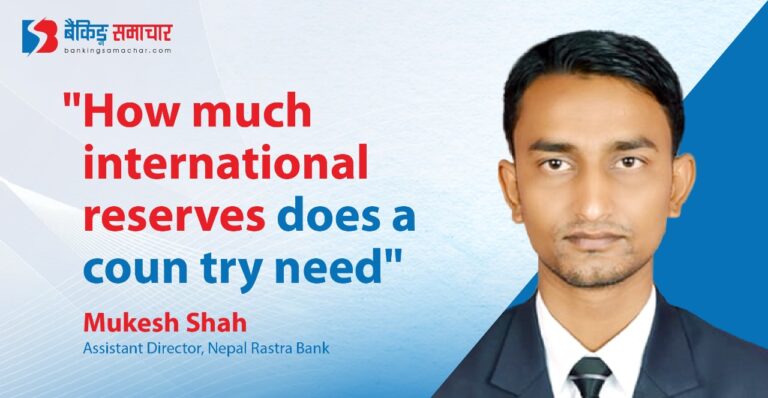How Much International Reserves Does a Country Need? by renowned economist Mukesh Sah. According to Sarthak Karki (Deputy Director of Nepal Rastra Bank) the article has been hailed as a groundbreaking contribution to the discussion on external balance, a topic that has gained renewed significance in the post-pandemic global economy.
The article is lauded for its clarity, innovation, and practical relevance, addressing the critical issue of foreign exchange reserves and their adequacy for nations like Nepal.
Here is why this article is consider as truly remarkable:
1) Provides a very lucid explanation of what foreign exchange reserve is and how much of it does a nation really need?
2) Breaks new ground in offering an alternative calculation of the reserve adequacy metric used by our country (i.e. import capacity)
3) Breaks new ground in not only suggesting but also estimating the reserve adequacy metric more appropriate for us (i.e. the ‘Expanded Greenspan Guidotti rule’ and how it’s corresponding estimate for Nepal comes out to be around 5.87 times the minimum recommended coverage!)
4) Provides irrefutable numerical proof how comparing Nepal with Sri Lanka & Pakistan (our dear neighbors who recently fell on hard times) is really akin to ‘chalk and cheese’. Consider this: ‘For every dollar liability, Nepal recently had 83 cents of international reserves while Sri Lanka and Pakistan had only 6 cents!’ Furthermore, there are marked differences between the nature of Nepal’s (much safer) Reserve assets & Foreign liabilities and that of the two neighboring countries (much riskier). Like all good scholarly work, this article also opens up new areas of exploration as well as areas of debate (e.g. one can have reservations about the author’s views on opportunity cost of holding reserves for Nepal – our borrowing cost being actually much lower compared to returns on foreign assets and sterilization not really required so far so perhaps far less crowding out; also, some technical comments on the form of gold included in our estimate of Reserve Assets). All regular ‘Puzzle solving’ activities as the great scholar of epistemology Thomas Kuhn suggests in his ‘Structure of scientific revolutions’.
Source: Blog of Sarthak Karki



 About Us
About Us
Comment